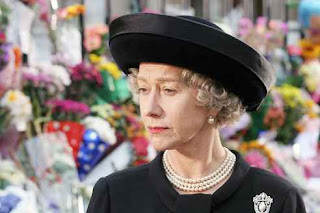
Lost and Found
by Thomas Delapa
Read between the lines in Sofia Coppola’s Lost in Translation, and you’ll discover a tender mood piece about the lost and dislocated feelings that can envelop you as a stranger in a strange land.
Back in 2000, the daughter of Francis Ford Coppola made an auspicious directorial debut with The Virgin Suicides. Translation is similar only in the younger Coppola’s interest in capturing life’s small, fleeting moments–the times spent blankly gazing out the window, lying awake at night or having a drink alone at a hotel bar.
You could say that Coppola’s precious film is her version of The Royal Tenenbaums. In the same way that Wes Anderson wrote and directed Tenenbaums as a custom vehicle for Gene Hackman, so is Bill Murray (essentially as Bill Murray) the center of Coppola’s attentions. As Murray has aged, the former farceur has acquired a melancholy depth that stands him apart from his comic contemporaries.
Murray plays Bill Harris, a Hollywood star in Tokyo to shoot a whiskey commercial for Japanese TV. (Japan has lured many an American and British celebrity to shoot commercials there, primarily those who refuse to do the same in their own countries.)
Married with children, Harris has come alone to Tokyo, a Blade Runner-like monstropolis teeming with shimmering neon, skyscrapers and as many karaoke clubs as noodle bars. The city itself is the other Coppola preoccupation, and it’s been beautifully photographed by Lance Acord to stress its gaudily postmodern amalgamation of east and west.
The other dislocated principal is Charlotte (Scarlett Johansson), a young New Yorker who’s tagged along on a work trip with her distracted photographer husband (Giovanni Ribisi). Blessed with a face that’s wholesomely serene and inquisitive at the same time, Johansson has joined the front rank of promising screen actresses.
After a series of close encounters, Bill and Charlotte strike up an unlikely friendship that’s somewhere between platonic and romantic. That may sound weird given the age difference, but Coppola and her leads handle the material with a maximum of delicacy and diffidence.
Coppola leans on mood to an extreme to engage her story. She tugs at that feeling of weightlessness you get when you’re in a foreign country, the sense of discovery but also the solitude and the strangeness. The experience is exaggerated in a city like Tokyo, where consumerist technology has been embraced with all the reckless enthusiasm of a child tearing open Christmas gifts.
Working from her own script, Coppola prods her camera and her cast to be tourists themselves. She skips into sushi bars, dodges pedestrians in busy thoroughfares and follows Murray and Johansson as they run together down streets like kids. As she eavesdrops on a noisy game parlor where one youth obliviously bangs away on an electric guitar, Coppola’s documentary instinct may be finer than her dramatic one.
Lost in Translation is a jangly comedy of manners about two people, lost and alone in a strange city, who discover each other. They have little in common, yet they accomplish writer E.M. Forster’s dictum to "only connect." In one gorgeous sequence, Bill and Charlotte go out for a night on the town, stopping to sing a couple of karaoke songs in a high-rise bar. Mimicking his Saturday Night Live lounge act, Murray mouths Elvis Costello’s "What’s So Funny about Peace, Love and Understanding," followed by Johansson pretending on a Pretenders song. The plot evaporates like morning mist on a summer window, but what’s left is a simple epiphany. Or in Japanese terms, it’s mono no aware–the transience of things.
Capitalizing on Murray’s famous deadpan double takes, Coppola adds a dash of comedy. But it’s mood that carries this movie, not mirth. In any language, Lost in Translation means much more as estranged feelings than as words.
-------------
Originally published in Boulder Weekly, 09/25/03












